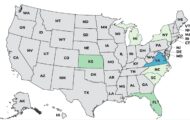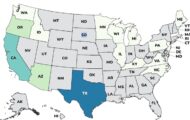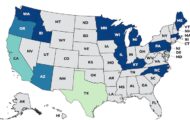The bacteria live in the intestinal tract of healthy cattle and do not make them ill. The animals shed E. coli in feces. When the cattle are slaughtered, their intestines can explode and feces can contaminate the muscle that is used for ground beef.
The United States beef industry has recalled more than 23,000,000 pounds of beef that has been contaminated with STEC E. coli in the past six years. These bacteria can cause potentially fatal hemolytic uremic syndrome in people, especially children and those in high risk groups. The Centers for Disease Control estimate that these bacteria cause about 110,000 cases of foodborne illness and 300 hospitalizations in the United States every year.
The GAO details four objectives of the report:
- Identify preslaughter interventions.
- Look at the USDA’s role in approving STEC vaccines.
- Examine the extent to which STEC strains have been declared adulterants and the status of the tests used to detect them.
- Examine the practices that other countries use to reduce these bacteria in cattle.
Possible interventions
The goal of preslaughter intervention is not to completely eliminate those bacteria, but to reduce them to a level where Hazard Analysis and Critical Control Points (HACCP) systems at slaughterhouses can control them.
These interventions are listed below. You can see that both the FDA and USDA are involved in this process.
- Prebiotics, which aren’t approved for use. The FDA would oversee this intervention.
- Probiotics, which aren’t approved for use. The FDA would oversee this intervention, but large amounts may be necessary to be effective.
- Natural product extracts such as orange peel, which aren’t approved, and would be overseen by the FDA. These may be difficult to obtain in large quantities, and may not pass through the cattle’s stomach.
- Vaccines are approved for use, are overseen by the USDA, and can be costly.
- Colicins, which aren’t approved and are expensive. This intervention would be approved by the FDA.
- Antimicrobials aren’t approved for use, are overseen by the FDA, but the bacteria can become resistant.
- Bacteriophages are approved as a wash used at the slaughterhouse, but the FDA hasn’t licensed this intervention as an oral product. Both the USDA and FDA oversee this intervention, but again, the bacteria may become resistant to this treatment.
- A chemical that kills the E. coli 0157:H7 strain called sodium chlorate, which isn’t approved. The FDA is responsible for approval of this treatment.
Other interventions are also mentioned, including improving basic sanitation practices, such as providing clean feed and water and keeping feedlots drained. One USDA study found, and the beef industry agrees, that these practices are good for the animal’s health and welfare, but don’t necessarily reduce pathogen levels.
Diet modification is another possible intervention, including feeding the animals grass instead of grains. Study results on the bacteria in grass-fed beef have been mixed, with some showing that a diet high in distillers grains, a by-product of producing ethanol from corn, increases STEC 0157:H7 in cattle. Other studies have shown that grass-fed beef can be colonized with E. coli.
Vaccine Approval
The USDA oversees STEC vaccines and other interventions. The problem is that few companies have submitted applications for these intervention products, with the exception of vaccines. And the USDA hasn’t supplied much guidance for companies that want to invent, product, and market vaccines. Without specific guidance, the approval process can be delayed.
Before 2005, the part of the USDA that oversees vaccines, Animal and Plant Health Inspection Service (APHIS), found that since STEC 0157:H7 bacteria don’t harm cattle, the FDA should cover regulatory licenses processes for vaccines since this was a food safety issue. There was confusion for some time over which agency would approve vaccines.
APHIS hasn’t issued any statements on this policy since 2006. That agency also said that it doesn’t release guidance on a biological product like a vaccine until it’s reviewed and approved three applications. APHIS released a one-page summary on licensing of preslaughter vaccines while the GAO report was being written, but that summary did not include documented guidance on the application process.
Government response
Last year, the USDA ruled that six other strains of STEC bacteria were adulterants in ground beef and beef trim. That “adulterant” label would add those six bacteria to the three other bacteria legally classified as adulterants in food. Since the government is going to require testing, food safety experts believe they have found evidence that these bacteria are not destroyed in the cooking process.
Meatpacking plants were originally ordered to start testing for these so-called Big Six later this month, but that change has been delayed to June.
Other countries have been more proactive in their effort to prevent these bacteria from entering the food supply. For instance, according to the report, in Europe, inspectors must verify cleanliness before cattle are slaughtered, and at least 12 EU countries collect and report data on STEC in live cattle. Denmark collects cattle fecal samples to test for STEC 0157:H7 every year. In Sweden, when a person develops an E. coli infection, the government traces the contaminated cattle back to the original farm. The USDA does not do this.
The report recommends that the government look at practices that other countries use for reducing STEC in cattle and see if they can be used effectively in this country. It also recommends that the administrator of APHIS should provide specific guidance on the license approval requirements. When the USDA has taken action on this matter, the GAO will issue another report.




